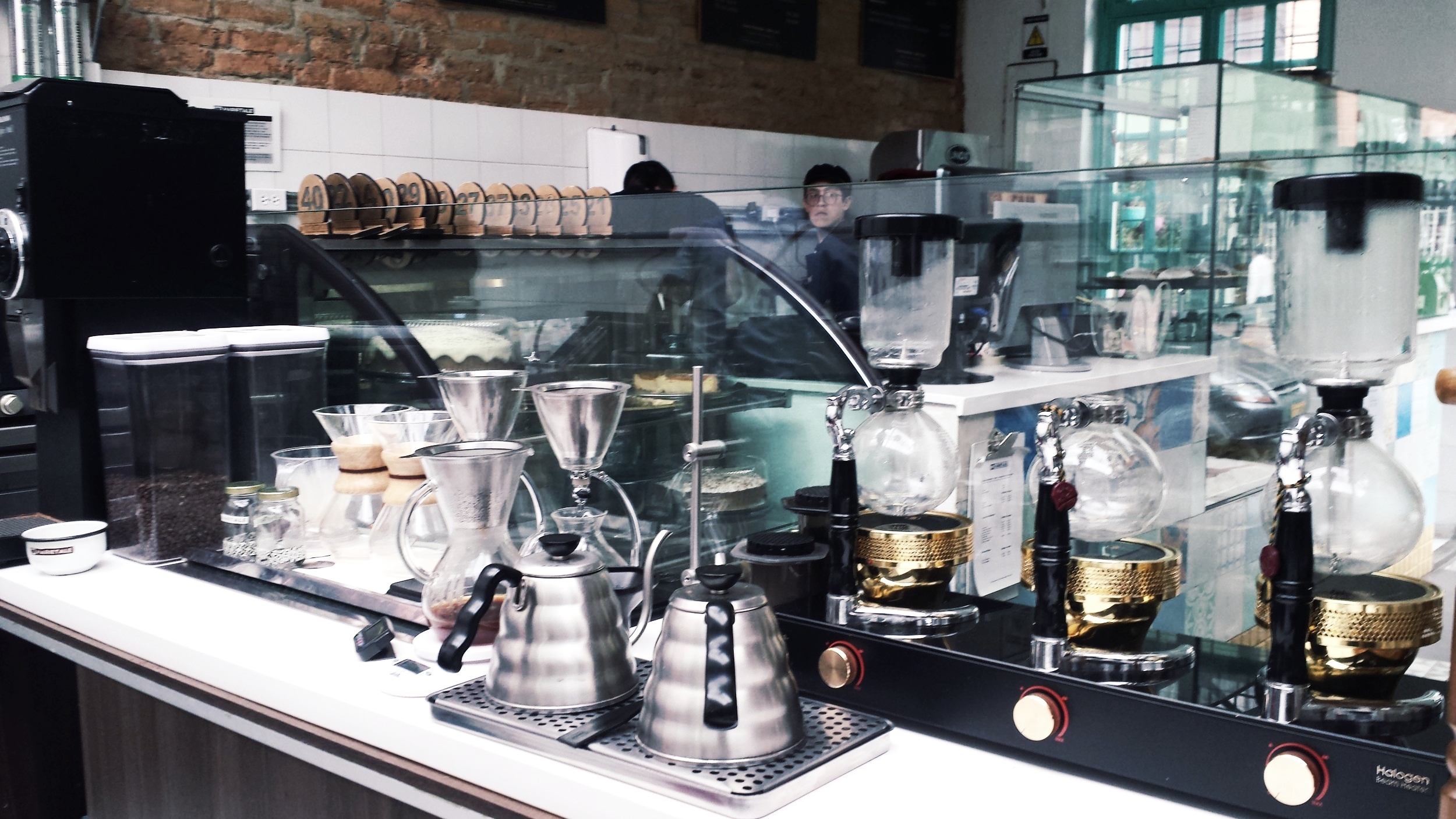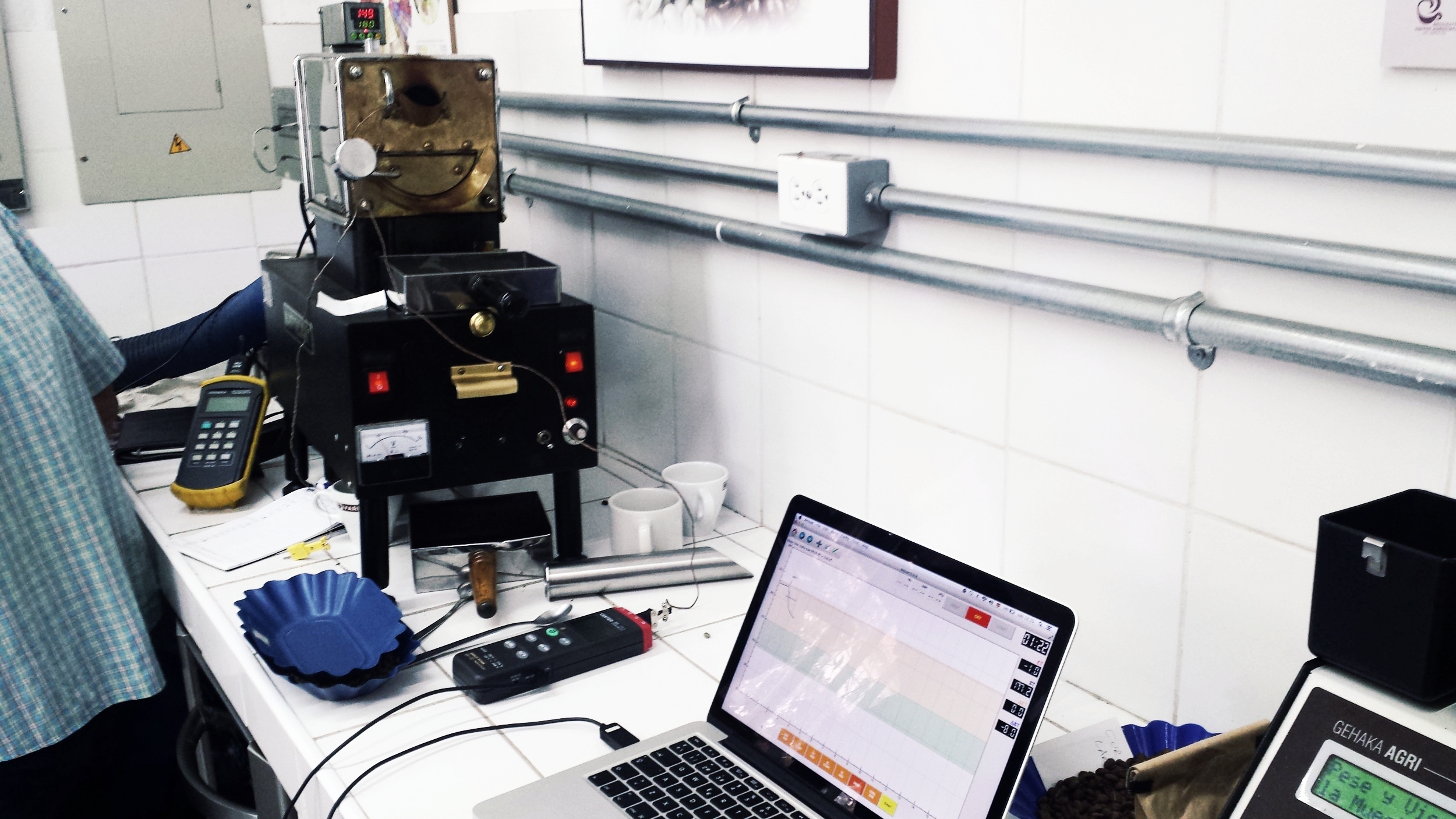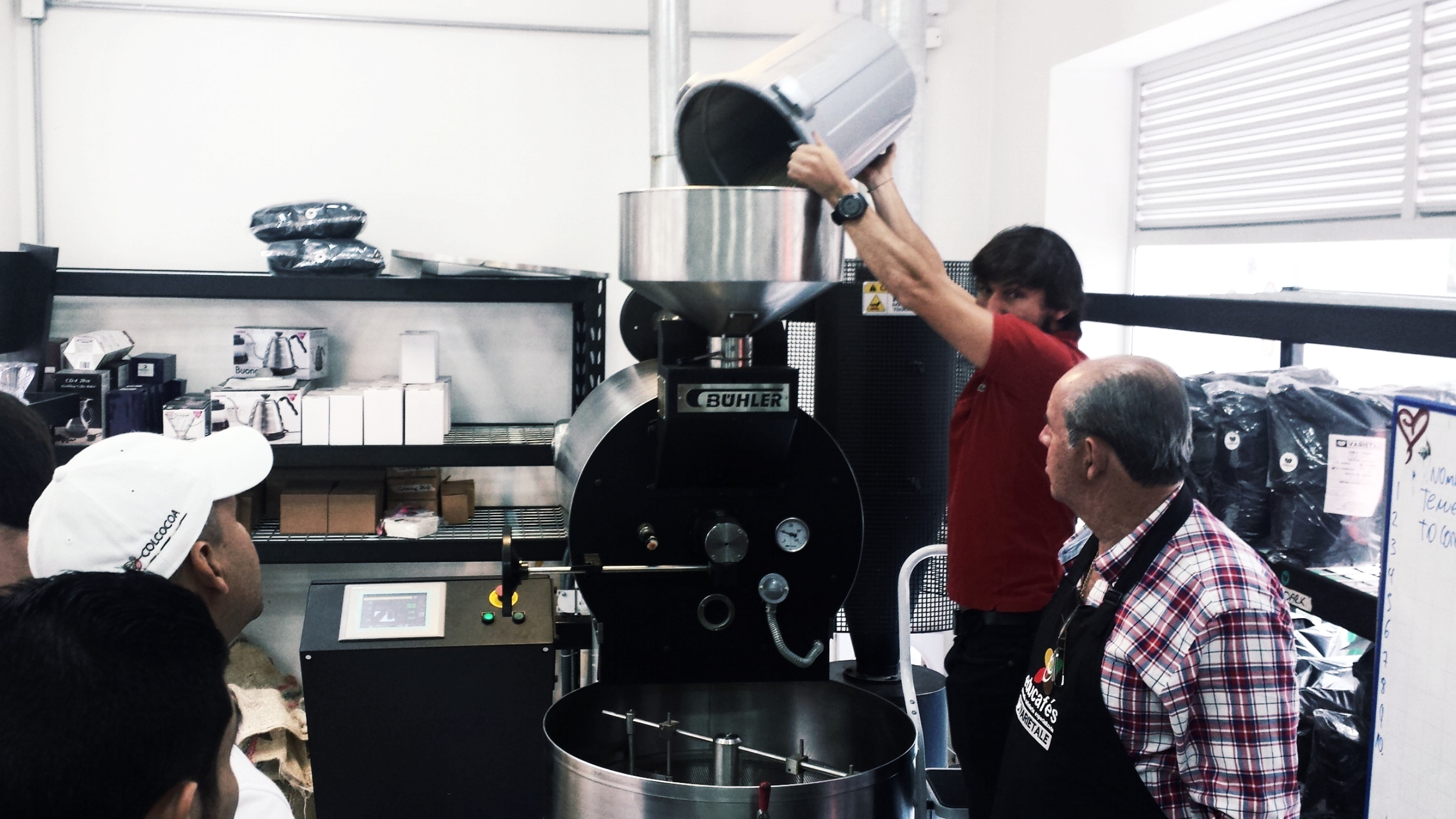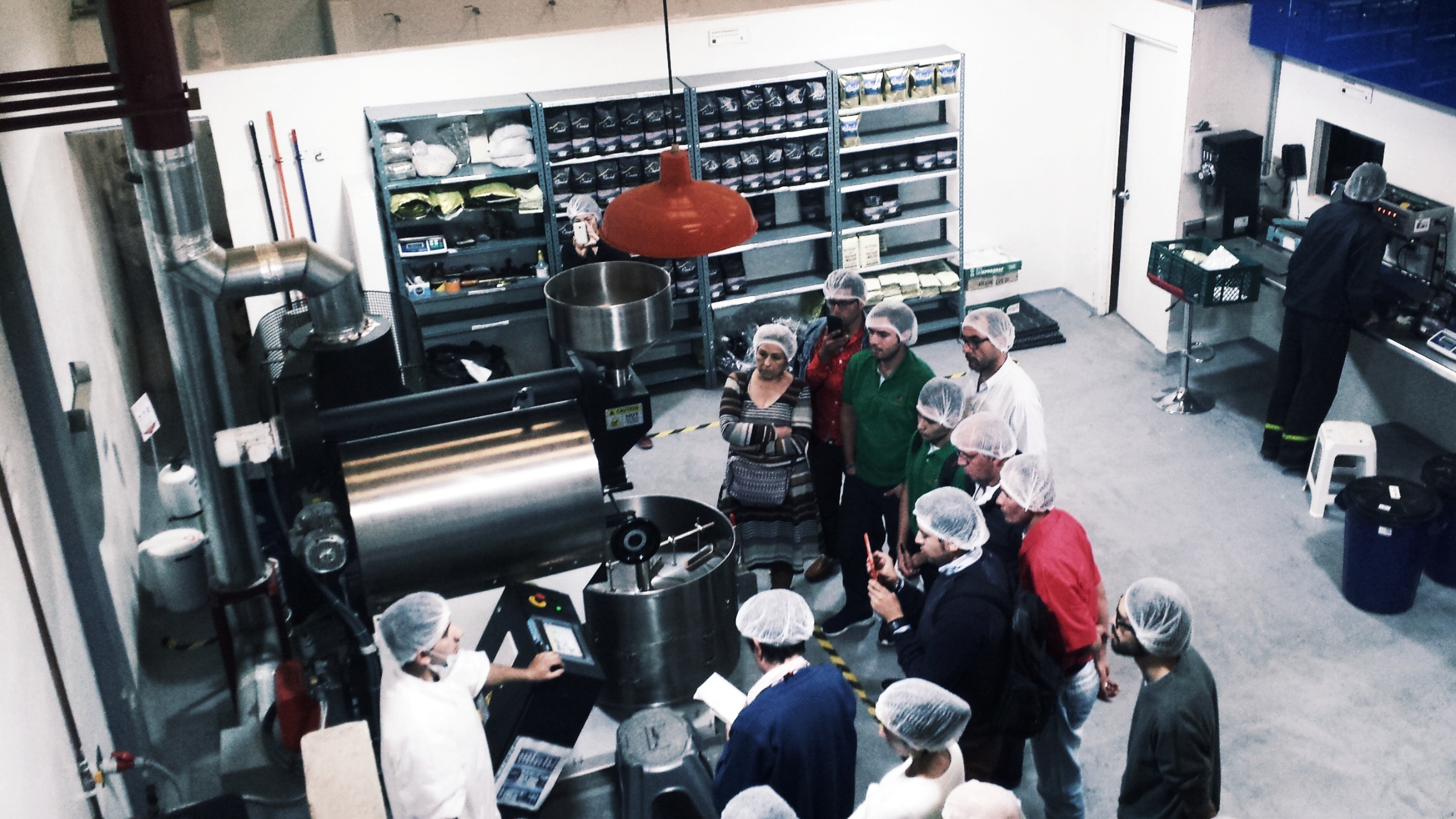“Just because a gringo has long hair and a neck tattoo, it doesn’t mean they’re right””
Or put another way, drinking some of the ultra-light roasts currently in vogue may make you feel ill, no matter how trendy they are. Which is not to say that here at ZipaCoffee we’re endorsing burnt coffee. Obviously it’s a question of balance.
And so, keen to hit the right notes as we continue to roast coffee on a Huky roaster in our Bogotá apartment, we enrolled in a three-day course offered by Educafés in collaboration with local café Varietale.
It turned out to be both a mad dash and solid introduction to what probably takes a lifetime to master: how to turn green coffee beans into something delicious in the cup, courtesy of heat applied in the right quantities at the right moments.
If it sounds easy, it isn’t.





Batches of beans roasted to the same ‘degree’ or end colour do not necessarily taste the same. How quickly their temperatures rise in the machine and how long they remain there will determine sugar and acid concentrations in the finished product.
As if that weren't enough, bean variety and density, batch size and altitude all need to be factored in to the calculations.
Alvaro showed us how to plot a roast's progress using Artisan software. Another software option is Cropster. In simplistic terms one could say typical roast curves look like a soup ladle or tick ✔, with temperature on the y axis and time on the x axis.
But as Buhler engineer Oskar Rutishauser explained in an interesting presentation, studies show consumers frequently prefer coffees roasted in completely different ways.
In any case, the course provided us with several new techniques to try out back home. Our thanks to organizer Parmenio Angarita and instructor Alvaro Pelaez for the insightful comments and good humour over the three days.





